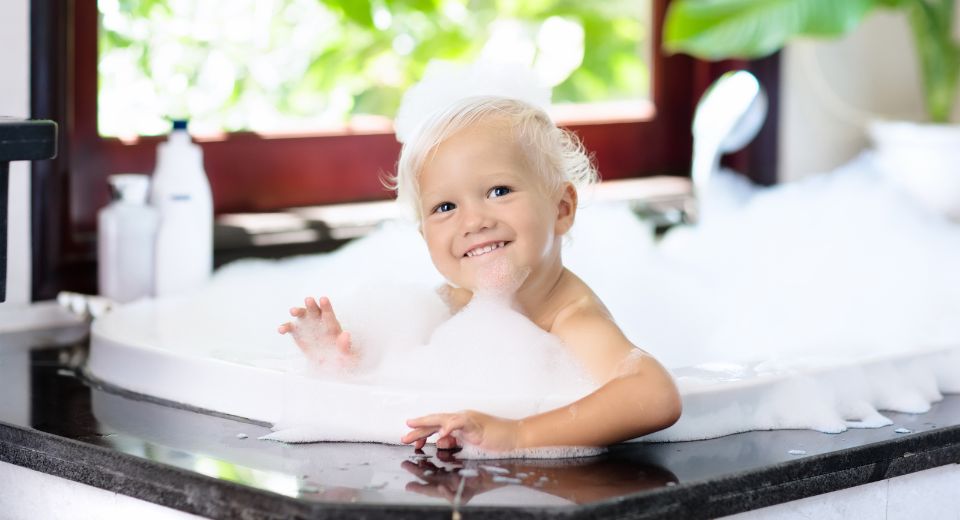
Author: Colleen Kraft, MD, Pediatrician
January is National Bath Safety Month. According to the American Academy of Pediatrics, an estimated 100 children die each year from drownings at home. Two-thirds of these incidents took place in the bath. Parents, caretakers, and babysitters can prevent these incidents if they implement the five layers of protection at home.
- Slips and Falls: Especially when kids are more mobile and can stand up on their own, it’s best to install a non-slip mat or non-slip stickers on the floor of your tub or shower. Covering water faucets with cushioned covers will help prevent your child from getting hurt should they slip and bump their head. The bathtub is not the only place where a child (or adult) can slip and fall in the bathroom. Ensure the bathroom floor has anti-slip rugs and dry off your child as soon as they exit the tub. It is also a good habit to have locks on toilet seats to ensure a curious toddler doesn’t fall trying to play with the water in the bowl.
- Electric Appliances: Do not use or store electric appliances near water. If you do keep any electrical appliances in the bathroom, such as hair dryers and electric razors, keep them locked and securely stored away from children.Do not use any appliances while in the tub or shower. Water and electricity do not mix, and using any devices while standing in water can be dangerous and sometimes fatal. If your child is old enough to understand what is right and wrong, teach them about the safety of electric appliances and to never use them around water such as the sink, tub, or shower.
- Water Temperature: Water temperature is very important to the health and safety of your child. Water that is too hot can make children feel overwhelmed, anxious, and can scald a child’s skin causing severe injury. It is crucial to test the water temperature before letting your child enter the tub or shower to ensure it is not too hot. Too hot of water can also strip the skin of its natural oils, leading to dryness and irritation. Water that is too cold can reduce circulation, lead to chills and be uncomfortable and may discourage children from wanting to take a bath. It is generally recommended to keep the water temperature of a child’s bath at around 100°F (35°C). To ensure the water is at a safe temperature, you can test the water with your elbow or wrist or buy a floating thermometer (kids love them!).
- Supervision: This is by far the most important safety tip when it comes to bath safety. It doesn’t take much water for a child to drown, so it’s essential to never leave your little one unattended in the bath. Just two or three inches or water can be enough for them to slip and become submerged. Parents should always keep an eye on their children while in the bath, keeping them supervised and not taking their eyes off them, not for a second. Have everything you need for bath time in arm’s reach and once bath time is over, immediately drain the tub. Never leave the water in the bathtub when no one is using it.
- Medicine and Toiletry Storage: Keeping medicine and toiletries out of reach of toddlers and small children will help keep them safe and prevent accidental poisonings or injuries. Begin by storing all medicine and toiletries in a locked cabinet or on a high shelf that is out of reach of children. Use child-resistant caps on all medications to make it more difficult for children to access them. Keep a close eye on your little ones in the bathroom, and ensure they do not have access to any potentially dangerous items.
Remember that children are curious by nature and they will get into things that aren’t securely stored away or locked. These safety tips are also good for adults and senior citizens. Using preventative measures for potential slips and falls are key for anyone, no matter what age.
The information provided is for general interest only and should not be misconstrued as a diagnosis, prognosis or treatment recommendation. This information does not in any way constitute the practice of medicine, or any other health care profession. Readers are directed to consult their health care provider regarding their specific health situation. Marque Medical is not liable for any action taken by a reader based upon this information.

